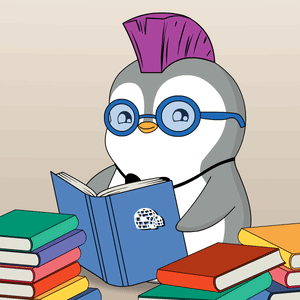 |
| Picture courtesy: Click LINK |
Thursday, November 5, 2015
Found Home but Lost the World
Tuesday, November 3, 2015
Is Virginity, Male or Female?
 |
| Picture courtesy: Click LINK |
Monday, November 2, 2015
Welcome to the Hormonal Industry
 |
| Picture courtesy: Click LINK |
Research has revealed that the level of oxytocin is very high when people fall in love. In men, their testosterone level reduces while the amount of oxytocin increases. This flux in the number of sexual hormones ensures faster bonding.Marriage guarantees a legal and social covenant between two people in love to be together, and that’s the reason why many feel anodyne to travel this road. Marriage is the result of these hormones secreted in our bodies. Marriage is thus, a hormonal industry!Once we sign a contract with this industry, the whole template of our habits, perceptions, and management patterns, transform completely. Those old unpleasant habits that we're unable to let die young during bachelorhood either receives renovation or get refurbished or fixed with the gentle breeze of so-called love. But to fix these square pegged habits into the round hole of marriage is always regulated by the buttons of understanding, compromises, sacrifices, devotion, and convictions. In some essence, marriage is rather like a literary journey. The winds of unprecedented euphoria of love that exists can transform us into a poet to write touching poetry or an artist to craft haunting lyrics of melodies.While even on brief separations, that aching pain enables us to understand the gravity of emotional torments suffered by John Keats, P B Shelly, and John Milton as expressed through their poetic limbs. We can feel exactly the way they did due to the madness of love. One intriguing thing about marriage is that it is a journey of two amalgamated souls with a single dream, sailing to survive the unexpected storms of life together.We learn to divide responsibilities and multiply devotion and sentience. As time mellows and as we grow old together, the love also matures into a form of a child - which then becomes the fountain of happiness, a lifeline and purpose of our life.More importantly, as we marry, we are promising the child to bestow a set of parents (a father and a mother), a commodity that is rarely found in pairs, in the market of our society today.On a scientific note, studies have revealed that married people live longer than single, separated, divorced or widowed people, and that, the mortality rate is low for almost every disease. In the words of Allan and Barbara (2009), ‘marriage has its good side. It teaches you loyalty, forbearance, tolerance, self-restraint and other valuable qualities you wouldn’t need if you had stayed single.However, marriage is the easiest subject in the world to have an unlimited opinion about, but perhaps the bravest thing to do. Bravest because we have to ensure it functions throughout the span of one’s lifetime. It is not proportional to the number of years. Sometimes, even the concrete ship of a marriage that journeyed 50 years suffers a cruel fate of wreckage within a fraction of a second. When it is on a rough note, which is a result of a screw gone loose, that fury has the ability to transform that once-upon-a-time-heaven into a living hell.Basically, the voyage of marriage is surprisingly full of ups and downs which is the consequence of some hormones which make us fall in love. It is not a default mode of human living that always produce the hymn of ‘happily-ever-after’ stuff.As I say it, you must understand that there is no single thread of thought to dampen your love. If you don’t marry, people might doubt your sexual orientation 😃 or those with a biological education might even doubt a hormonal disorder.Socially, marriage is generally considered proof of true love. Embrace it to sail on the cruise ship of your life with your love. Experience, the hard teacher as many say, would teach you on the way of your life.Good luck, buddy.
Monday, October 19, 2015
Silent Treatment
 |
| Photo courtesy: Click LINK |
Friday, October 16, 2015
Plagiarism
 |
| Photo courtesy: Click LINK |
In the schools, in the event of doing class works, either intra-corpal (copying the work from their mates) or extra-corpal plagiarism (copying the work from external sources such as websites or books) is highly rampant. And during the publication of magazines, few switch to self or auto-plagiarism (resubmitting the work that was previously submitted).
Sunday, October 11, 2015
An Alter Ego while driving?
Wednesday, October 7, 2015
Green School in Green Bhutan
“What do you understand by Green Schools in Green Bhutan?”
The concept was gaining popularity at the time, thanks to Bhutan’s Education Minister actively promoting it.
As I read through one of the essays, a particular student’s words caught my attention:
“Green Schools in Green Bhutan means schools having lots of green trees and plants. All schools look the same with green vegetation”
I could not help but smile 😊. The student was not entirely wrong – green schools should indeed have trees, plants, and a clean environment. But was that truly all there was to it? Something seemed to be missing.
To be fair, I could not entirely fault the student. Many educators themselves were still unsure about the true essence of the concept. How could we expect our students to understand something when we, as teachers, had not fully grasped it ourselves? That moment marked the beginning of my decision to explore and explain the real meaning of Green Schools in Green Bhutan—something everyone, even young students, could understand.
What is a Green School?
A Green School is not just about trees and plants. It is a school that nurtures both nature and people. It teaches students to grow not only in knowledge but also in kindness, respect, and happiness. Bhutan introduced the Green Schools in Green Bhutan concept to make education more than just studying books. Schools should help students become good human beings while also caring for the environment.
This idea was led by Thakur Singh Powdyel, Bhutan’s former Education Minister, and was inspired by His Majesty the 4th Druk Gyalpo Jigme Singye Wangchuck. It became a key part of educating for Gross National Happiness (GNH).
But what exactly makes a school green? There are 8 important aspects or areas:
1. Natural Greenery – A Clean School
 |
| giphy.com |
Natural greenery is one of the most important parts of a Green School because it shows how the school looks and feels. A school with natural greenery is clean, fresh, and well-organised, with beautiful trees, plants, and flowers. There is no litter, plastic waste, or anything harmful to the environment. It is a peaceful and healthy place where students and teachers respect nature. A school like this does not allow things like graffiti, junk food, or substance abuse. Having natural greenery helps students learn values like cleanliness, love for nature, peace, and responsibility for the environment.
Imagine walking into two schools:
· School A has trees, gardens, fresh air, and students taking care of the surroundings.
· School B has trash on the ground, no plants, and dusty air.
Which one would you feel happy in? Of course, School A! 😁
Natural greenery makes a school feel peaceful and healthy.
We can promote this area by:
· Planting trees and flowers around the school.
· Keeping the campus clean – no plastic, no litter.
· Setting up a waste segregation system for recycling.
2. Intellectual Greenery – Growing Our Minds
 |
| tenor.com |
Intellectual greenery is about growing our minds and understanding the real purpose of coming to school – to learn and think wisely. Just like a field needs to be prepared before planting crops, our minds need to be open and ready to absorb knowledge. If we do not fill our minds with good learning, they might be used in the wrong way.
A strong and healthy mind should welcome good ideas, moral values, and creative thinking at all times. If we do not challenge ourselves to learn and think deeply, we miss out on the real benefits of education. Intellectual greenery helps students develop focus, confidence, curiosity, determination, and the ability to think and make good decisions.
Here is an example. A teacher asks, “Why do we have seasons?”
· Student A just memorise the answer from the book.
· Student B – thinks critically, asks questions, and tries to understand deeply.
The second student is growing intellectually green! We can promote intellectual greenery by:
· Encouraging students to ask questions.
· Organising debates, discussions, and creative learning activities.
· Teach the value of curiosity and critical thinking.
3. Academic Greenery – The Love for Learning

Academic greenery helps us appreciate the knowledge and ideas shared by great scientists, philosophers, educators, poets, and authors. Without this, we may not truly understand why subjects like science, economics, and literature are important. These subjects are filled with valuable ideas – science helps us understand the world, literature adds meaning to life, and economics teaches us how societies function.
By valuing the hard work and discoveries of thinkers from the past and present, we keep the spirit of learning alive. Academic greenery ensures that knowledge is passed down and continues to grow for future generations. Students who embrace academic greenery develop qualities like appreciation, curiosity, respect, gratitude, and joy in learning.
In a school where academic greenery is strong:
· Students do not just study for exams; they enjoy learning.
· Teachers make lessons interesting and fun.
· Everyone values books and knowledge.
We can promote this dimension by:
· Have a library full of interesting books.
· Encourage project-based learning, not just memorisation.
· Invite guest speakers to share real-life knowledge.
4. Social Greenery – Living in Harmony
 |
| tenor.com |
A school is a place where teachers and students, with different skills and knowledge, come together. It is more than just a building with classrooms and sports fields; it is a community. In this community, people share different values and beliefs, and they learn from each other every day. They understand that working together peacefully and depending on each other is important.
When one person succeeds, everyone feels proud, and when someone faces failure or illness, the whole team feels it too. Through social greenery, everyone works together to face challenges, no matter how big they are. This part of greenery helps build values like unity, teamwork, cooperation, peace, and harmony.
This means,
· If a student falls down, others rush to help.
· If a classmate is struggling in studies, friends tutor him or her.
· Everyone respects teachers, staff, and fellow students.
We can support this greenery by:
· Organise group activities to teach teamwork.
· Celebrate differences – respect all cultures and backgrounds.
· Teach kindness and empathy through real-life examples.
5. Cultural Greenery – Respecting Our Traditions
 |
| tenor.com |
Culture is a way of showing who we are and how we do things. It is expressed through how we dress, speak, believe, pray, or follow traditions.
Since culture is full of beauty and creativity, schools should provide a space where students can explore and express this creativity, grace, and uniqueness. Today’s learners will be the ones to protect and carry our culture in the future. A student with a strong cultural understanding will be respectful, feel connected to their community, and follow social norms. This cultural foundation will help our youth practice and pass on traditions in a way that keeps them alive for future generations. The values shaped by culture include identity, personality, character, uniqueness, individuality, peace, and harmony.
In a culturally green school,
· Students wear national dress (Gho & Kira) with pride.
· Schools celebrate traditional festivals like Losar and Tshechu.
· Students learn Bhutanese values like respect for elders.
We can further enhance this component by:
· Teaching traditional songs, dances, and arts.
· Encouraging students to speak Dzongkha.
· Conducting storytelling sessions on Bhutanese legends.
6. Spiritual Greenery – Believing in Something Bigger
 |
| tenor.com |
One thing that unites all Bhutanese, especially as Buddhists, is the shared sense of spirituality. We do not see ourselves as complete beings on our own. Instead, we are grounded in the belief that there are countless other beings – superior, powerful, capable, and more intellectually gifted than us – whose support is essential for us to achieve our dreams. This way of thinking reminds us to nurture and strengthen our spiritual connection. Spiritual growth helps cultivate values such as belief, relationship, strength, dependence, trust, hope, faith, devotion, loyalty, sincerity, conviction, confidence, and reliance.
For example:
· A student learns to be grateful for food and prays (tomchoe) before eating.
· Students follow the practice of respecting the natural elements such as mountains (by not climbing), trees, lakes, and rocks as having life.
· A school organise mindfulness meditation to promote inner peace.
We can encourage this by:
·Teaching kindness and compassion (elements of Buddhism) through simple acts.
· Encourage reflection and gratitude exercises.
· Organise meditation or quiet time.
7. Aesthetic Greenery – Seeing True Beauty
 |
| tenor.com |
An aesthetically aware student can easily tell the difference between appearance and reality. Technology has made the world seem to turn ugly into beautiful, fake into real, and uncertain into certain. However, with a sense of aesthetic awareness, we can truly recognise what is genuinely good and beautiful, while rejecting what is unnecessary and unworthy. This understanding helps us focus on doing the right thing and stop engaging in immoral actions. Such awareness brings values like truth, honesty, integrity, appreciation, insight, admiration, pleasure, satisfaction, contentment, and fulfilment.
With aesthetic greenery:
· A student appreciates a beautiful sunrise rather than just taking a selfie.
· Art and music are part of daily school life.
Aesthetic greenery can be promoted by:
· Encourage art, music, and creativity.
· Teach students to appreciate beauty in nature and life.
8. Moral Greenery – Knowing Right from Wrong
 |
| tenor.com |
Moral awareness is like a compass that helps us know what is right and wrong, good and bad, or true and false before we make choices. It helps guide our minds to grow in kindness and do good things, which makes us better members of our community. Kids with strong moral values are good at making decisions, thinking clearly, and understanding what’s right.
Examples:
· A student returns a lost wallet instead of keeping it.
· A school discourages bullying and teaches fairness.
Moral greenery can be improved in the school by:
· Teaching students about ethics and responsibility.
· Rewarding honesty and good behavior.
· Organising discussions on moral dilemmas.
The key message of this concept is that education is not just about books – it is about growing as a person. Through this idea, the dream is to make our schools in particular and the world in general, a better place to live.
Labels
Disclaimer
Copyright (C)
Copyright © 2012- Dumcho Wangdi. All Rights Reserved





